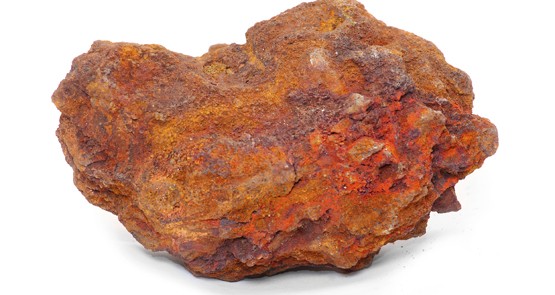
Trade pain. Believe it or not, but iron ore prices hit a three-month high overnight, despite more supply flooding global markets. The spot price rose to US$44.63 a dry tonne in northern China yesterday, which is highest level since November, according to Metal Bulletin figures. And believe it or not, iron ore prices are up (yes, up) 2.4% this year after the 39% slide in December. Analysts reckon the rise is temporary and prices will fall after the Lunar New Year holiday week in China from this weekend. Goldman Sachs and Citi both reckon the price will tumble to under US$40 a tonne because of rising supply and shrinking demand in China as the government closes surplus steel-making capacity. But it must be said no one picked this early year rise and no one picked the fact that iron ore would outperform oil, copper, etc (but not gold, which overnight hit its highest price level since last October).
Oil prices jumped sharply in Europe and the US as well (a relief rally on short covering as investors punt the Fed won’t be raising interest rates any time soon). The Aussie dollar jumped to well over 71 US cents and seems to be on the way back over 72 US cents and where it started 2016. But that level isn’t justified by our trade figures, out yesterday, for December and 2015, which were not pretty. The trade deficit in December of $3.5 billion was one of the four highest on record and one of the three highest in the past four or five years. In fact the $32.7 billion trade deficit in calendar 2015 was a new record, according to Bureau of Statistics data going back to 1971. For the December quarter, trade deficits totalled $9.5 billion, up 27% or $2 billion from the $7.5 billion recorded in the September quarter when the cumulative total of trade deficits tumbled $3 billion (and helped produce a solid rise in GDP). — Glenn Dyer
Nonagenarian out at CBS, Viacom next? Sumner Redstone, your time is up, at CBS at least. The struggling executive chairman of the US TV group is 92 years old, a recluse and the subject of a nasty court case where his mental competence is being challenged (and could be tested this week). So to forestall any fallout from a possible adverse ruling in the case, he stepped down this morning from chairing CBS, to be replaced by the network’s CEO, Les Moonves. Redstone’s daughter, Shari Redstone, remains vice-chair of CBS (she nominated Moonves for the top job to the CBS board, meaning it was a family-approved deal). Sumner Redstone was promoted to “chairman emeritus”, which means very old and with no power.
When you control 80% of the shares in CBS and Viacom (where the board meets tomorrow and is expected to make a similar decision to replace the nonagenarian), you can be called anything. The after-hours announcement caused CBS shares to jump more than 7% in regular and extended trading. Moonves’ appointment at CBS will be seen as a big plus. Viacom shares are up nearly 8% this year, which means they are still well under what they were two years ago. With Redstone ailing, it’s considered Viacom, rather than CBS, could be sold by the group after the old bloke departs. And guess who is rumoured to be sniffing around Viacom, looking for a deal? That well-known octogenarian Rupert Murdoch and his 21st Century Fox. — Glenn Dyer
A win is a win. Anti-fracking protesters will no doubt claim victory, but AGL’s decision with withdraw from fracking and coal seam gas extraction this morning was more down to the slide in world oil and gas prices and weak results from the Gloucester project in NSW in particular. AGL says the decision will cost it write-downs of $640 million after tax or close to $800 million pre-tax. AGL said this morning the impairment would have “minimal” impact on its underlying profit for 2015-16, and the cash impact is likely to be less than $10 million. The charges will be recognised in the company’s accounts for the December half. In other words, the values to be written down were all paper, or hot air (or gas?).
The company says it will cease production at the Camden Gas Project in South West Sydney in 2023, 12 years earlier than previously proposed, AGL said. AGL will also sell its Queensland assets at Moranbah, Silver Springs and Spring Gully. It said asset sales are likely to raise $10 million at most. — Glenn Dyer







Crikey is committed to hosting lively discussions. Help us keep the conversation useful, interesting and welcoming. We aim to publish comments quickly in the interest of promoting robust conversation, but we’re a small team and we deploy filters to protect against legal risk. Occasionally your comment may be held up while we review, but we’re working as fast as we can to keep the conversation rolling.
The Crikey comment section is members-only content. Please subscribe to leave a comment.
The Crikey comment section is members-only content. Please login to leave a comment.